
This parent guide supports parents in helping their child at home with the 7th grade Science content.
- Subject:
- Science
- Material Type:
- Reference Material
- Vocabulary
- Author:
- Kelly Rawlston
- Letoria Lewis
- Date Added:
- 10/11/2022

This parent guide supports parents in helping their child at home with the 7th grade Science content.

This resource accompanies our Rethink 7th Grade Science course. It includes ideas for use, ways to support exceptional children, ways to extend learning, digital resources and tools, tips for supporting English Language Learners and students with visual and hearing impairments. There are also ideas for offline learning.
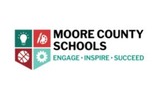
This is a hands-on project that uses George Orwell's novel, Animal Farm, as the touchstone text. Students work in groups to construct a functioning windmill that can generate electricity. Each student has a role based on the characters in the book. There are also segments of the project that focus on extracting key information from the text.

This lesson is partially aligned to standard 7.P.2.3 — Recognize that energy can be transferred from one system to another when two objects push or pull on each other over a distance (work) and electrical circuits require a complete loop through which an electrical current can pass. It focuses primaryily on energy transfer and electrical circuits. It does require some preparation and supplies such as a circuit kit, and holiday lights, wire stripper, allumnimum foil, bracket fasteners and tape. This is an engaging resource and does not utilize technology.
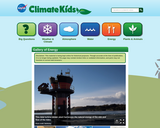
This series of 11 captioned images depict the harnessing of three types of alternative energy sources: tidal, wind and solar. In contrast, several images of fossil fuel usage are included. The Climate Kids website is a NASA education resource featuring articles, videos, images and games focused on the science of climate change.

Students will use basic materials (brass paper fasteners, paperclips, wire, cardboard and light bulb / battery setups to make a simple switch circuit.

Students will design a working trebuchet for maximum accuracy, distance and force using the engineering design process. Students will utilize the measurement formulas to calculate kinetic and potential energy and therefore create a trebuchet for a specific function (ex: hitting a target, knocking down a wall or launching for distance).
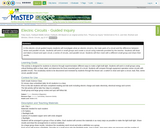
In this electric circuit guided inquiry students will investigate what an electric circuit is, the main parts of a circuit and the difference between series and parallel circuits. Students will work in small groups and create a circuit using materials provided by the teacher. Students will draw and label a closed and open circuit, a series of circuits, and parallel circuit. Students will then meet with a different small group and share their results.
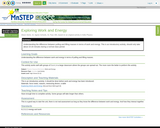
This is an introductory activity that introduces the concept of work and helps students understand the difference between work and energy in terms of pulling and lifting masses.

This 1-2 hour activity was developed by Science Friday educator collaborative for middle school science. Students will "reverse-engineer a solar circuit to build a simple, inexpensive, and lightweight device that is powered by the sun’s light...in order to...integrate their circuit into a moveable origami structure so that the movement of the origami serves as the switch to the circuit."
Simple dollar store solar stake lights can be used for the disassembly which can be demonstrated by the teacher or completed in small groups. By reverse engineering the solar light, students explore the components and how they work together. The second activity has them sketching and explaining what they discovered.
Resources are included that explain solar cells and circuits more in depth (including a text webpage from American Chemical Society, a video from SciToons on YouTube, and an online circuit simulation from PhET, among other choices for your class' needs).
The student engineering "notebook" and rubric are downloadable in Powerpoint and Word form, not just pdf.

Students learn how to design and construct different turbine blades to maximize the power output of a wind turbine through the use of the engineering design process.

Students learn how electricity is generated and how design variables affect electricity production. This lesson explores the physics of how generators work and some variables to improve performance.

In this lesson, students will investigate and model how the various forms of energy are transferred into other forms of energy.
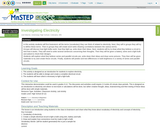
In this activity students will first brainstorm all the terms (vocabulary) they can think of related to electricity. Next, they will work collaboratively in groups to try to define these terms. Then in groups they will create word webs drawing correlations between the various terms. Groups will discuss how light bulbs work, how they light up, write down their ideas. Next, students will try to draw what they believe a circuit is and how it works. They will need to write several sentences concerning their thoughts. Then they will be given a battery, wires and a light bulb and asked to check their designs. Students will explore what they believe series and parallel circuits are, write down their ideas and draw some pictures. They then will be given materials to try and create these circuits. Finally, students will predict and test differences in bulb brightness in a variety of series and parallel circuits.
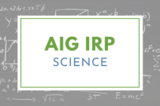
Within the physical science strand of 7th grade science, students focus on understanding forms of energy, energy transfer, and transformation and conservation in mechanical systems. In this task, students investigate “mystery boxes” and use a student-constructed circuit tester to determine the location of closed circuits. Students will then create their own “mystery boxes” including both series and parallel circuits. Finally, students will then create study guides for other content areas using their understanding of closed circuits. The application and interdisciplinary nature of this lesson allows students to creatively build meaningful connections while promoting 21st Century Skills. This lesson was developed by NCDPI as part of the Academically and/or Intellectually Gifted Instructional Resources Project. This lesson plan has been vetted at the state level for standards alignment, AIG focus, and content accuracy.

In this lesson, students are introduced to energy transfer and tansformation by examining examples and then building their own Rube Goldberg machine.
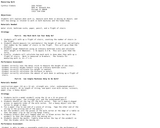
Students will explain what work is, measure work done in moving an object, and tells how energy is related to work in both machines and the human body.

This course was created by the Rethink Education Content Development Team. This course is aligned to the NC Standards for 7th Grade Science.

This course was created by the Rethink Education Content Development Team. This course is aligned to the NC Standards for 7th Grade Science.

This course was created by the Rethink Education Content Development Team. This course is aligned to the NC Standards for 7th Grade Science.